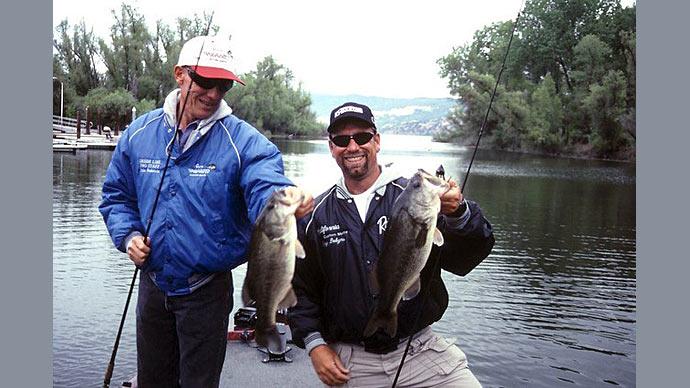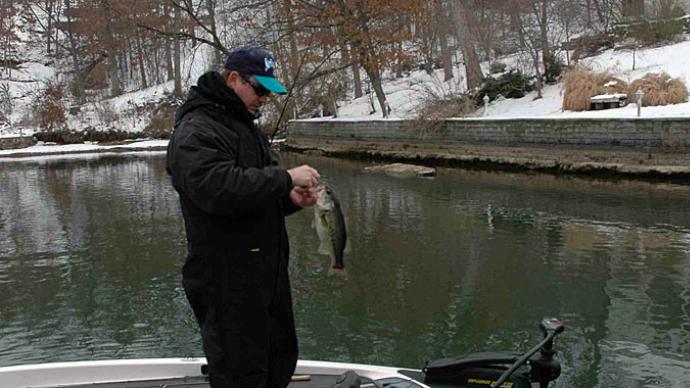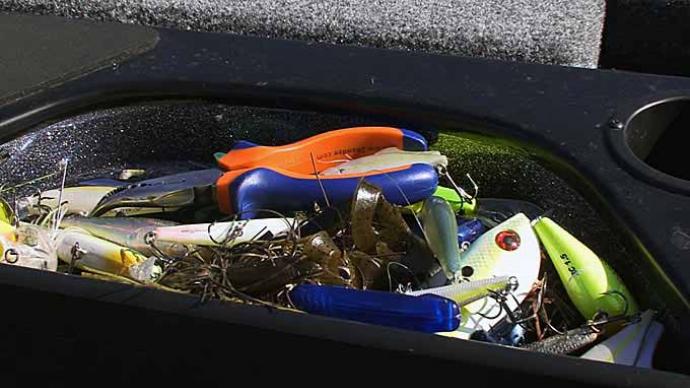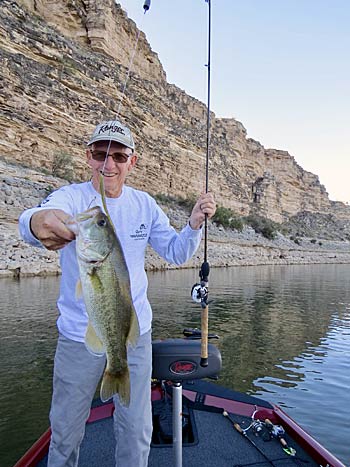
Generally speaking, the key to catching fish in winter is to slow down. It often means fishing deep, but bass still have to eat even in the coldest temperatures. They may come up shallow at some time during the day, but they still won’t be willing to chase a bait fast or far most of the time. A floating bait is one type of lure that has you covered shallow, mid-range, and deep while maintaining the ability to be fished slowly. Depending on how you rig it, you can fish a floating bait suspended on the bottom or even as a topwater lure. They also tend to catch big fish.
Harold Allen, “the pro’s pro,” was inducted into the Bass Fishing Hall of Fame in 2015 and has fished fifteen Classics. One of the baits in his arsenal is the floating bait. Most often, he says, he uses floating baits when the water is clear, and fishing is tough. You have to slow down in those conditions, says Allen – “slow, slow, slow.” The key to being a successful fisherman does not have just one strong suit – he says you need to be able to change.
Shallow, Feeding Fish
When the fish are actively up feeding, there are several ways to rig a floating worm, says Allen. Usually, he would use the rod tip to make the worm twitch erratically on a slack line. For these, you need to rig the worm straight on an offset hook with no sinker. If you use a straight hook, the worm slips, and an offset hook also tames line twist. Use a fine wire hook so the worm can float it. If you still have line twist problems, you can use a small barrel swivel an inch above the worm. Line twist, he says, is the worst part of fishing a floating worm on top. A tiny swivel can cause the worm to sink very slowly. That can be a good thing.
Allen likes bright colors for floating worms – yellow, white, and occasionally merthiolate colors. It’s a reaction strike – here’s a lure that’s just floating, with occasional twitches, and the bright colors draw the bass’s attention.
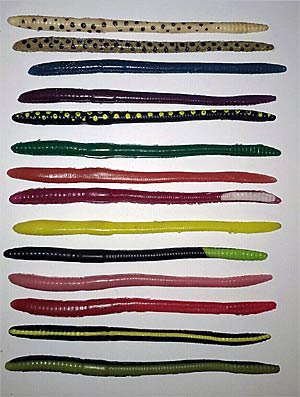
He also fishes floating worms with larger hooks to make them fall slowly. This method is not a reaction bait. He can get this into where the fish lives – “he opens his mouth, and there it is,” says Allen. A fish will come and get it. His best success with this is throwing the bait and letting it fall. Watch the geese, adjust your cap, whatever. It takes patience. He says it has its own action – most people try to work it too fast, just like they work topwater floating worms too fast. The size of the hook dictates the fall. With a 4/0 hook, it will fall sort of fast, he says. With a 2/0, it falls slowly. He rarely goes above a 3/0, however.
For this method, rig the bait Texposed. If there isn’t any brush, don’t even nip the point back in. You have to watch the line constantly. Hold the rod tip low and barely bump the slack out of the line – this makes the ends of the worm come together, then separate. Let it float slowly down to cover and remain keenly aware of any resistance. Nine times out of ten, he says, you’ll go to bump the slack out of the line, and you’ll feel pressure. When this happens, reel up the slack gently, and the fish will hold on. Let some slack back in, get your rod in position for the hookset, and wait for the fish to move, he says, then slam it. Harold uses the lightest line possible for the cover he is fishing, preferably 8- to 10-pound-test. “Rig that hook, so you don’t have to hit it hard,” he says.
Deeper Fish
For targeting deeper fish, Harold uses floating baits on a Carolina rig. He says he “never, never” uses anything but a floating bait on a Carolina rig. You need a bigger hook because you generally use a bit bulkier bait. He says he used to think this was a small fish lure, but not anymore. On Sam Rayburn, he says, you can fish a Texas rig, and someone will come along behind you with a Carolina rig and kill you. It’s suitable for tough conditions, weather changes, etc.
A four-inch bait is killer on a Carolina rig, and you can play with colors and shapes to match baitfish, craws – whatever. In more challenging times, he says, smaller baits always get more bites. A lizard is usually his first choice because it almost always catches the bigger fish. A flippin’ stick is too heavy for a Carolina rig – takes all the fun out of it. He uses a 7-foot rod, and his leader is usually about 18 inches. The tougher the fishing, the longer the leader.
You can get a good hookset with a 7-foot rod, says Allen. Many guys sweep the rod up, but it works better for him to keep the rod low and to the side. It drags the weight and gives you a better feel. Lifting the weight gives you a false sense of what is going on. The first time he fished a Carolina rig, he lifted the rod, and he says he went on point when that big old weight hit. Feel is the name of the game with this rig. You must be conscious of what is happening and anticipate a strike every time you move the bait.
Allen uses offset hooks on the Carolina rig. The cover dictates the sinker's size and the leader's length. He prefers to keep the leader to three feet or less because it is easier to cast. He says he once saw some guys in Georgia fishing a two- to four-foot flat, throwing a ¼-ounce weight with a 10-inch leader, and catching all kinds of fish. Just let the conditions dictate the details. He says he can’t think of any situation where one of these techniques won’t catch fish for you.
These techniques with floating worms, says Allen, will work in any cover. You need to know where the fish are first, so find them, then fish thoroughly using one of these methods. The method depends on the location of the fish. He says on days that are “as slick as glass and tough as a boot,” he’ll go to places where he has caught fish before and fish the floating bait. You can rig a floating bait to stay at just about any depth where you see fish, so give one of these techniques a try this winter. Then keep fishing them for the rest of the year.
Floating Baits
- Danny Joe’s Original Floating Worms don’t float, they have a slow fall.
- Bass Pro Shops Floatin’ Worm “Stays near the surface.”
- ZMan Floating Wormz float rigged weightless. ElaZtech. Zmanfishing.com
- ZMan Finesse Wormz salt impregnated slightly less buoyant – tails stand up off the bottom.
- Super Floaters on eBay – original floaters. These are the kind Westy Worms were made from.
- Mann’s Hardnose Snake swims on the surface.
- Gambler Floating Worm – stays just below the surface.
- Mad River Super Float Worms paddle tail. Have super floater bubbles in the plastic to make them buoyant in the water. Available at Cabelas.
BassResource may receive a portion of revenues if you make a purchase using a link above.


